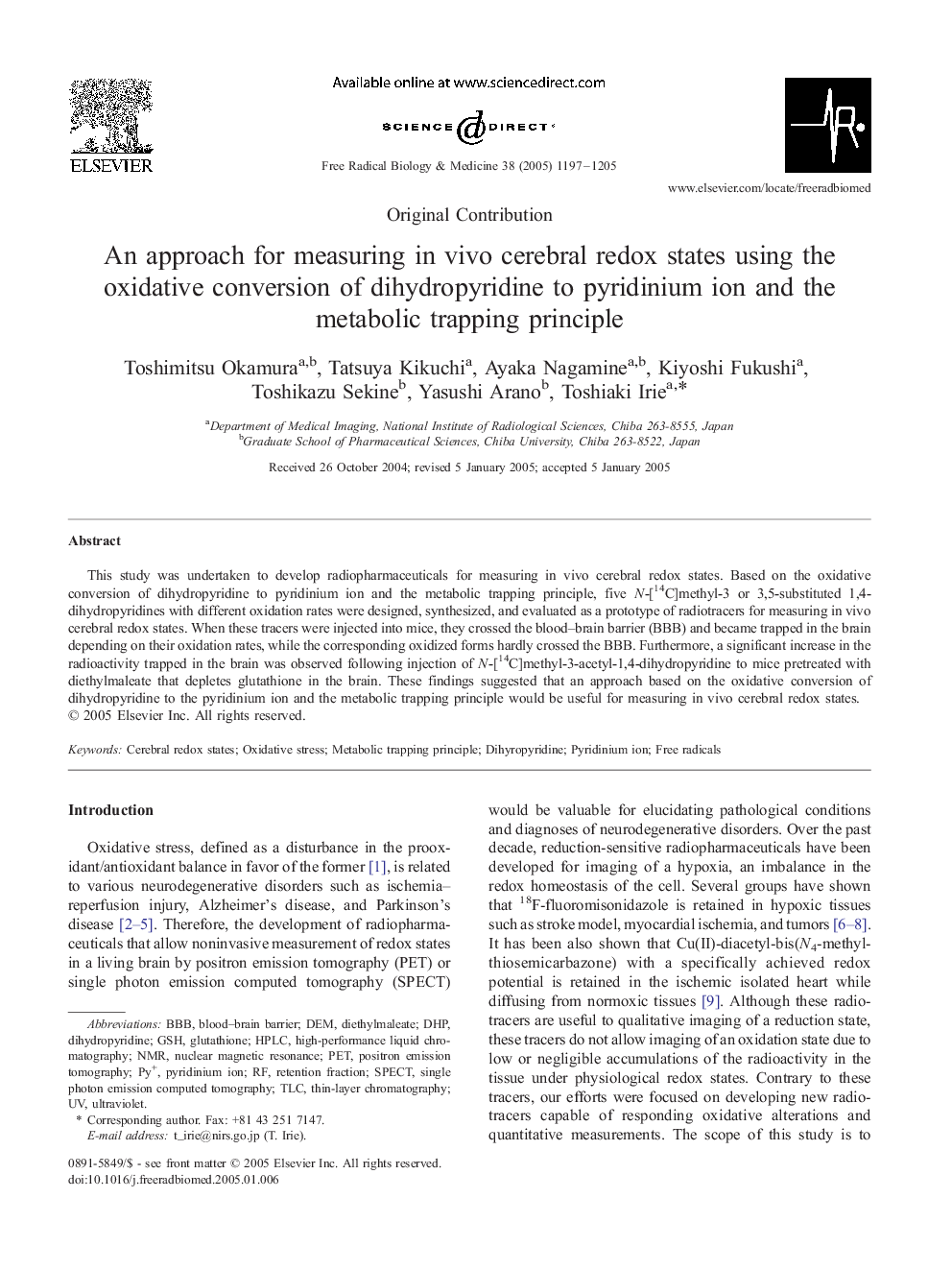| Article ID | Journal | Published Year | Pages | File Type |
|---|---|---|---|---|
| 10738875 | Free Radical Biology and Medicine | 2005 | 9 Pages |
Abstract
This study was undertaken to develop radiopharmaceuticals for measuring in vivo cerebral redox states. Based on the oxidative conversion of dihydropyridine to pyridinium ion and the metabolic trapping principle, five N-[14C]methyl-3 or 3,5-substituted 1,4-dihydropyridines with different oxidation rates were designed, synthesized, and evaluated as a prototype of radiotracers for measuring in vivo cerebral redox states. When these tracers were injected into mice, they crossed the blood-brain barrier (BBB) and became trapped in the brain depending on their oxidation rates, while the corresponding oxidized forms hardly crossed the BBB. Furthermore, a significant increase in the radioactivity trapped in the brain was observed following injection of N-[14C]methyl-3-acetyl-1,4-dihydropyridine to mice pretreated with diethylmaleate that depletes glutathione in the brain. These findings suggested that an approach based on the oxidative conversion of dihydropyridine to the pyridinium ion and the metabolic trapping principle would be useful for measuring in vivo cerebral redox states.
Keywords
Related Topics
Life Sciences
Biochemistry, Genetics and Molecular Biology
Ageing
Authors
Toshimitsu Okamura, Tatsuya Kikuchi, Ayaka Nagamine, Kiyoshi Fukushi, Toshikazu Sekine, Yasushi Arano, Toshiaki Irie,
